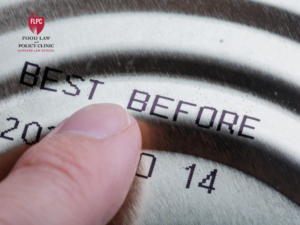Harvard Law School Food Law and Policy Clinic releases new toolkit outlining real-world policy solutions to improve public health and nutrition by reducing the consumption of sugar.
Excess sugar in the form of snacks, desserts, and sugar-sweetened beverages has become a mainstay in food production in the United States, contributing to increasing rates of preventable diet-related disease, and to great individual suffering and societal cost. But the onus of reducing sugar consumption too often falls solely to individuals.
The newly released Sugar Reduction Law and Policy Toolkit by Harvard Law School Food Law and Policy Clinic (FLPC) presents a comprehensive overview of policy opportunities to reduce population-level consumption of sugar and illustrates the role that government officials and policymakers must play in supporting healthier and more sustainable sugar consumption levels across the U.S.
The Toolkit provides an overview of sugar consumption and its deleterious effects on society. For example, an adult in the United States consumes on average 17 teaspoons of sugar per day despite the World Health Organization (WHO) recommendation that sugar intake be less than 5% of daily calorie intake, or approximately 10 teaspoons per day. The Toolkit offers a comprehensive overview including an analysis of efficacy, equity, and feasibility of six promising sugar reduction policy solutions, discusses the principle legal, political, economic, and societal barriers to the implementation of these policies, and provides real-world case studies showing how each of the policies can be and have been implemented.
“Excess sugar consumption is a major equity issue. Access to healthy food choices is extremely difficult, if not impossible, in many systemically marginalized and under-invested communities, and predatory marketing by sugar industries disproportionately targets low-income populations,” said Emily Broad Leib, Faculty Director for FLPC and Professor of Law at Harvard Law School. “Local and state policymakers can make the choice to enact appropriate policies to respond to this historic trend and its impact, including rising rates of diet-related disease and associated personal suffering and health care costs. We urge advocates and policymakers alike to read our Sugar Reduction Law and Policy Toolkit and explore the policy options.”
The Toolkit provides detailed information about six policy solutions that could be implemented at the state or local levels in order to reduce the consumption of sugar:
- Sugar-Sweetened Beverage (SSB) Tax: A tax designed to reduce the consumption of drinks with added sugars.
- Warning Labels on Product: Warnings on food products, in advertisements, and eatery menus to alert consumers about the risks associated with consuming a product.
- Healthy Default Policy: A preselected healthier default food or beverage option at restaurants and eateries to nudge consumers towards a healthier meal.
- Healthy Retail Policy: Incentives or requirements for retail locations to stock nutritious foods and beverages.
- Healthy Procurement Policy: The use of procurement standards to prioritize or mandate that government agencies purchase healthy foods.
- Public Awareness Campaigns: Public relations and messaging to educate communities about the risks of particular foods or beverages.
“A number of legal, political, economic, and social barriers have prevented policymakers at all levels from responding sufficiently to the harmful effects of excess sugar,” said Joseph Beckmann, a clinical fellow at FLPC. “While there is no one-size-fits-all solution, we developed the Sugar Reduction Law and Policy Toolkit to help stakeholders understand and navigate challenges in order to enact meaningful policy change in different local contexts.”
The Sugar Reduction Law and Policy Toolkit was developed as part of FLPC’s Approaches to Reducing the Consumption of Sugar (initiative), supported by Arnold Ventures Foundation. The Toolkit compiles findings gleaned from the three-year initiative during which FLPC conducted extensive legal research and worked directly with community organizations, food policy councils, and local and state government entities in eight locations across the U.S. as they worked to implement innovative sugar-reduction policies. The full Toolkit is available here.

Health Law & Policy, Commentary
Cuts to the Federal Workforce and Medicaid: What’s Happening and What Can Advocates Do? – Health Care in Motion
March 12, 2025